The Impact of Digitization on our Business Environment.
How much have you invested in your website to ensure that it works for you? Owning a running website is a great step towards success in digital marketing. A fully functioning and optimized website adds more value to your business.
The world around us is quickly changing. The fast-paced business environment is getting revolutionized with the advancement in technology. This is changing how we approach work.
How?
Digitization is now dominating the work space. We all need to be knowledgeable and tech-savvy to keep up and be productive. This article will focus on on-page optimization.
The goal is to point out the fundamental aspects of digital marketing and SEO services. We will major on how best to optimize your website.

1. What is On-page Optimization?
These are the actions and measures taken on your website to position it better in search engine ranking. These actions enable your website to rank better on search engine results. It also generates more organic and warm traffic to your website.
On-page optimization actions include:
- Optimization of content on the website
- Improvement of the meta description
- The title tags
- Optimizing the headlines
- Internal links
- URLs
On-page optimization takes into account the various aspects of the web pages. When combined together, these aspects improve the performance of the website.
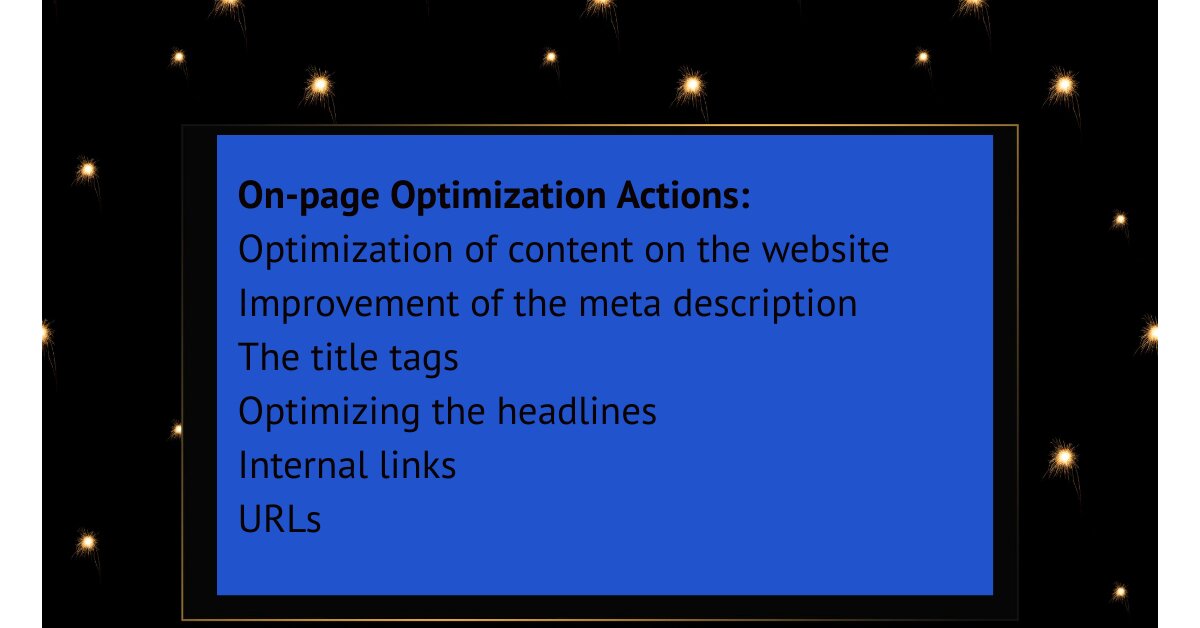
We will look at all these details in due course. Some training in Digital Marketing, especially on SEO will be very helpful to you.
2. Why is On-page Optimization important to your Website and your Business?
It enables search engines to understand your website and its content. Also, on-page optimization helps identify the relevance of content in your web pages. Users search for specific information online, and on-page optimization helps solve their queries.
How Google Search Engine Actually Works
Google as a search engine has improved over the years as technology advances. Google Search now responds faster and more accurately to online searches. There is more emphasis on relevance and semantics in Search Engine Results Pages.
Google receives billions of online queries per minute per day globally. To optimize the results, the SERPs put more emphasis on both relevance and semantics. This enables getting better and more relevant results faster.
Google as a search engine has become more advanced and sophisticated over the years. Its complex algorithms enable better searches through billions of dollars worth of data and servers.
Google is best placed in understanding the searches by online users. It matches the input queries with results that best suit the queries. This input and output procedure follows the same pattern for all inquiries on the web.
Get the Best from an Optimized Site
If you own a website, adapting to these developments is important. People who are looking for essential information online need to find you. With an optimized website, you are more visible to search engines.
The end-users rely on text, images and audio in interacting with the search engine. The search engine elements consist of HTML tags and structured data.
Through on-site optimization, you have more control when optimizing the on-site elements. These elements include:
- Internal Linking
- Content
- Videos.
Well done on-page optimization results in more visibility on search engines, as well as more traffic.
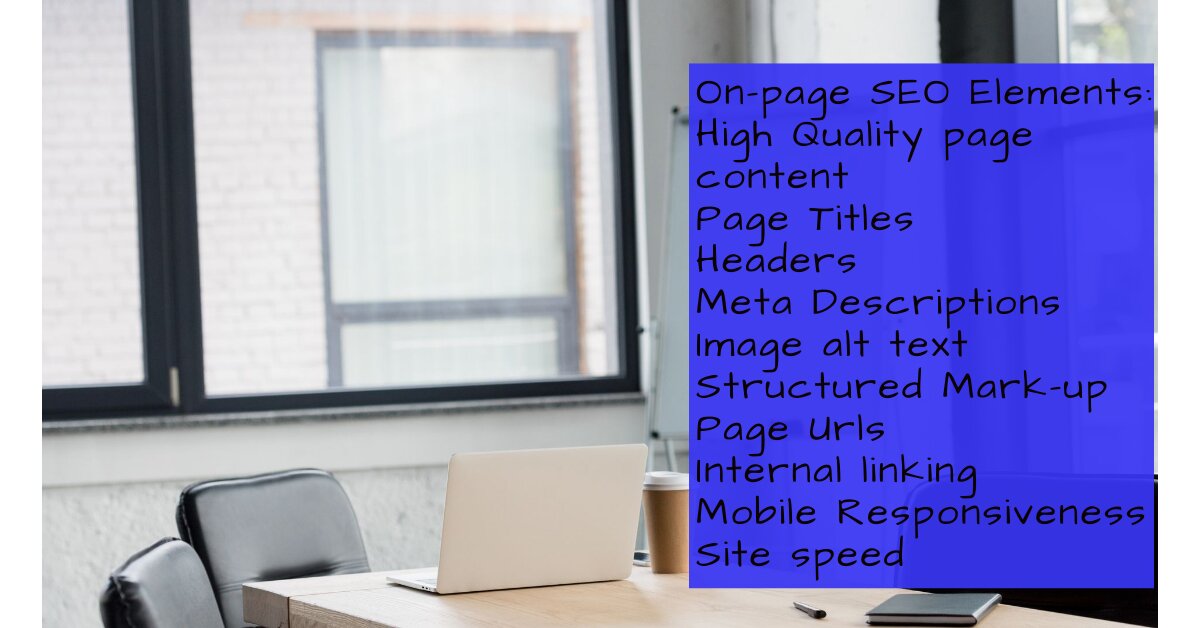
3. What Basis Does Google Use to Rate Websites and Content?
Website rating on Google is usually based on 3 fundamental aspects:
- Expertise
- Authoritativeness
- Trustworthiness.
The EAT (see above) are used to assess websites, web pages and content by creators online.
It is important for you to have high-quality content on your website, as required by Google Search. Google rewards high-quality content with better ranking and visibility. Low-quality content has limited search engine visibility and low traffic.
Thus, you need to consider EAT in your SEO strategy. This will be by using EAT the same to create quality content for better ranking and visibility.
4. Is Web Architecture important in On-page SEO?
Website architecture is the way your website is structured. The structure could be flat or deep.
- Flat architecture: A user can reach your pages in at 4 clicks or even less. Your pages should not be more than 4 clicks away from the homepage. This structure is ideal for SEO.
- Deep structure websites are characterized by some of the pages being more than even ten clicks away from the home page. This becomes problematic for users searching online and search engine crawlers.
A good website should be easy to navigate, have quality content and relevant information that is easily accessible. These attributes would be crucial in driving more conversions. Web architecture is important in SEO because:
- Properly done website architecture makes it easier for users to find what they need on your website. Search ginseng crawlers find it easier to locate your pages and indexing them
- It plays a key role in sending link authority around your website.
- the internal links to high priority pages enable more link authority to those pages. This would translate to better page ranking.
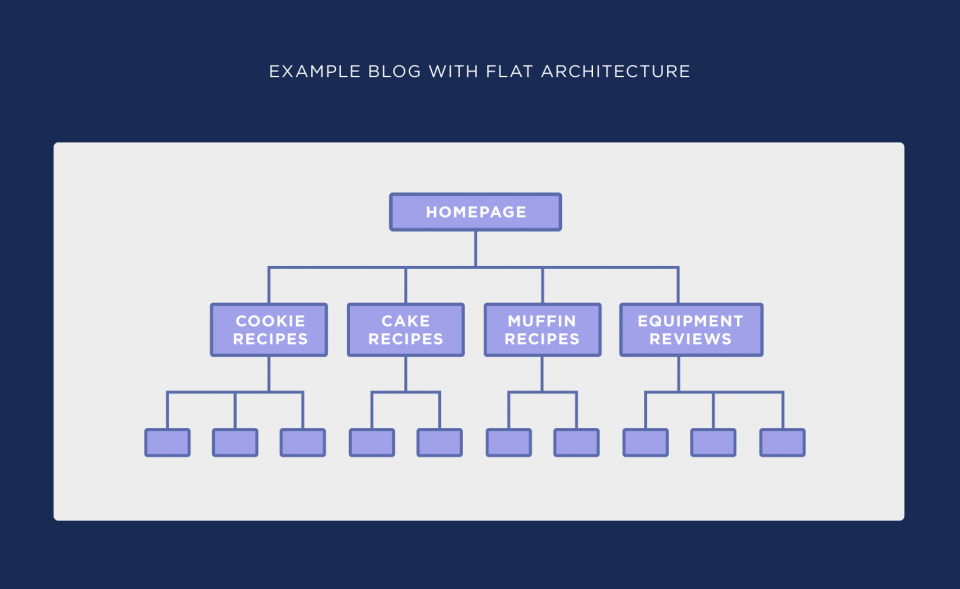
5. What are Title Tags?
On a web page, a title tag is an HTML element which specifies the title. Such tags get displayed on the SERPs as headlines which are clickable for a given result.
Title tags are essential for usability, SEO and social sharing. They provide the context of the subject matter of the web page. This assists in giving useful cues to users searching online on a given subject matter.
Although title tags have little impact on organic ranking, their usability, social sharing capabilities are vital in optimization. They give important cues to online users on search engines hence necessary when optimizing your web page and website and content.
Missing Title tags , or those which are poorly composed and or duplicated would impact negatively on your on-page SEO results. Although it might seem a minor issue, it could still be costly in the long-run.
When you compare poorly done Title tags to those which are rightfully done, the difference would be very clear. There would be more traffic for properly done title tags on the latter’s web pages.
6. What are Meta Descriptions and why are they important?
Meta descriptions play a fundamental role in SEO. A Meta Description is a snippet that summarizes the contents in a page. Composed of about 160 characters, Meta descriptions provide a brief summary of a page.
They get displayed by search engines such as Google when the searched for phrase is within the description. They have a high possibility of influencing CTRs, thus crucial for on-page optimization. Meta descriptions and Meta tags are usually displayed in the SERPs, below the page title.
There are many benefits that come along with the Meta description.
- The descriptive and summative attributes of Meta descriptions assist a great deal in improving the click-through rates;
- Shape online visitors’ perception of the quality of results on the information they search for;
- influence perception users have regarding your website.
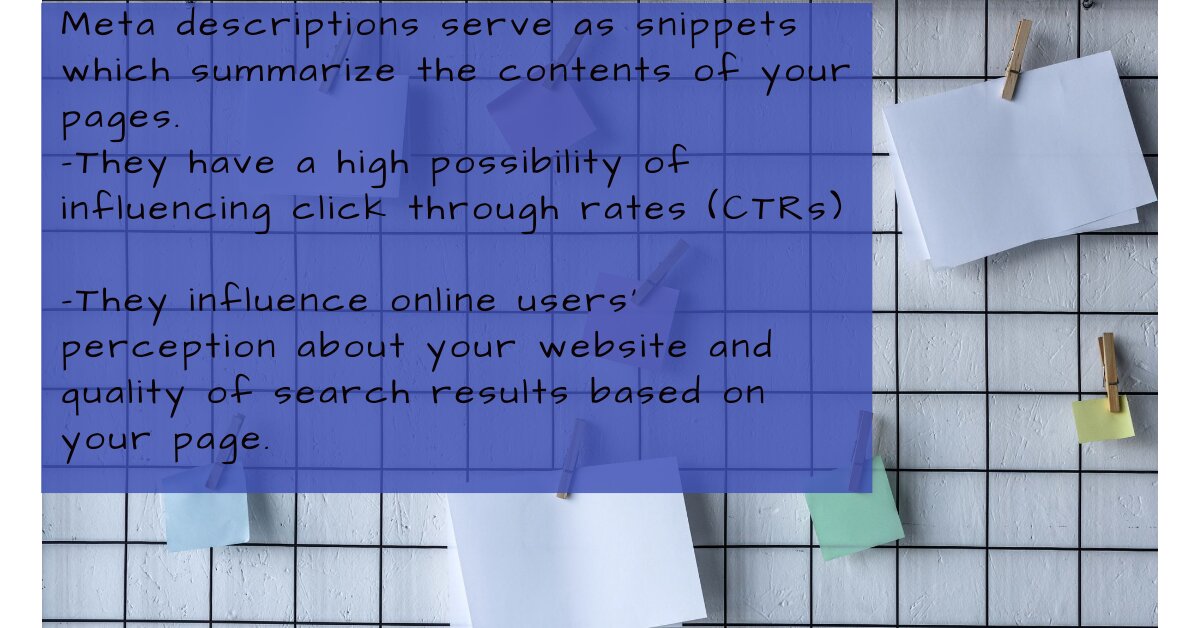
7. What Role do Headlines Play in Web-pages?
Like in any other written content form, headlines play an important role in attracting and retaining potential readers. Website content that has compelling headlines is poised to do well compared to poorly structured headlines or none at all.
A great headline for your pages and content is critical in determining click-through volumes and impressions. It is imperative that the headlines get created with a strategic mindset.
Well done headlines for your content on the pages should ignite online visitors’ interest. They stand out in the search engine results pages (SERPs). More readers would be attracted by them, and get enticed to click through and read the content. The more readers visit the website and read through the content, the better the organic traffic and count.
8. What are Heading Tags?
Heading tags are HTML elements used to differentiate the headings (H1) and subheadings (H2-H6) of content on a page. They separate heading from the rest of the text.
Headings enable more readability and smooth flow of content to users who navigate the web pages and read through content. Their importance cannot be understated.
Also known as header tags, they are important to both users and your website SEO. Although Header tags do not impact directly on your search engine ranking, they make your content more legible. Also, it provides a basis to maximize the use of keywords.
9. Is SEO Writing that important to web pages?
A good website needs to have quality content. As part of content development, you need to consider proper SEO writing. Content for your pages should be created with the users and search engines in mind.
A better SEO Writing strategy would be to develop solid SEO content while considering the needs of users and habits. SEO writing is more than keyword research and descriptive words to fill up space. The content must be of high quality, legible, relevant, substantial and objective.
10. What is Cannibalization of Keywords, and can it be used as SEO Strategy?
Keyword cannibalization is a problem that could mess your website ranking, with adverse implications. It could happen when you rely on one or very limited keywords on multiple web pages. A bunch of web pages that target the same keyword goes against Google’s guidelines regarding keyword stuffing across multiple pages.
Keyword stuffing, considered as spam indexing, is a strategy used to manipulate a website’s ranking in Google search results. A particular keyword is used multiple times in a page’s Meta tags, back-link anchor text and visible content. This is to manipulate the site ranking in Google search results.
Such keywords appear as a list or a group, out of context and are purposely to gain an unfair rank advantage. Whereas this strategy worked in the past, Google’s advanced systems cannot allow keyword stuffing. It could cause your website getting removed from search rankings, or even worse precious content entirely removed from search ranking.
A regular website analysis is important to identify such a problem. Resolve any such issue as soon as possible.
11. What factors should one consider in doing Content Audit?
Whereas creating new fresh content regularly is important, the existing content should be reviewed and audited frequently too. Which methodology will you use to do this?
- Take stock of all your generated content
- Figure out how you performed (metrics on different categories)
- Create customer profiles based on their readership
- Conduct a gap analysis
- Develop your new content strategy based on priority and action.

Content auditing enables a better way to create fresh relevant content based on past performance and identified gaps. As part of SEO strategy, content auditing should get done regularly. This would enable you:
- To evaluate the ROI of existing content
- The relevance of your content
- What is actually working for you
- Where to put your focus on.
12. What is Image Optimization?
The phrase ‘A picture is worth a thousand words’ is so true in page content development. Image optimization is an essential part of on-page optimization. Quality optimized images are strong visual components that stand out on any web page.
They have a great impact on online visitors, and readily attract huge traffic to the page and content. However, poor use of images on created content could mess up otherwise good work.
Google image search is a relatively good source of traffic, as well as other search engines. Image optimization would include use of alt tag, title tag on the selected images. Also, the image size, image naming and links to the images should be taken to account.
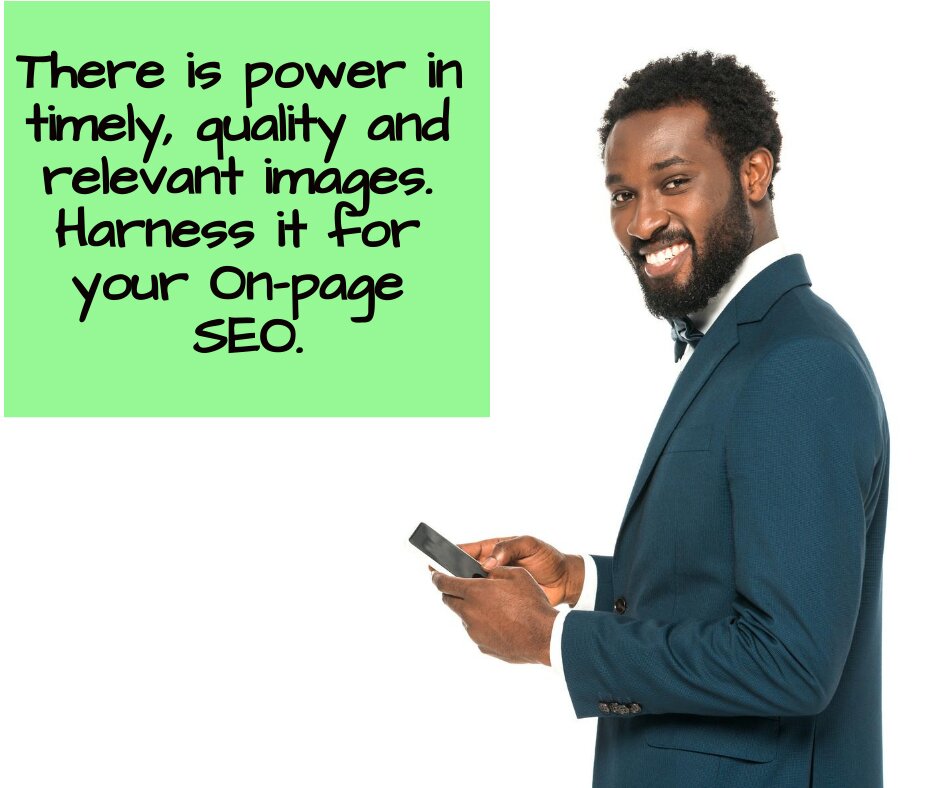
The advantages of such optimization include additional ranking opportunities on Google Image Search, better user experience and faster page loading time. As such, images should uncompromisingly be part of content development and on-page optimization.
13. How well do you carry out User Engagement?
How effectively are you engaging your online audience? People who visit your website need to be actively engaged to keep coming back for more. Reducing the bounce rate means increasing user engagement.
How will you get more online visitors attracted and engaged on your web pages?
- Ensure your site and web pages load up as fast as possible on the web browsers
- Work on developing a seamless user experience as they navigate through your web pages and content
- Optimize your website and web pages
- Optimize your images, as included in your content. Images that are not well optimized could drag your web pages and site.

14. How do you Perform against the On-Page SEO Checklist?
On-page optimization is an exhaustive but necessary process to enable you gain better search engine ranking and drive more traffic to your pages. To fully implement the process, you need a systematic process that ensures you coordinate your pages, keywords and track all the changes. This on-page SEO checklist would provide you with a step by step guidance to implement on-page optimization.
- Crawl your website
- Conduct an exhaustive SEO Audit
- Define your site architecture
- Update your URLs, Title tags and Meta descriptions
- Highlight and outline the value proposition from each web page
- Define your target audience
- Add New meta descriptions
- Track keywords and topics for each web page
- Review and audit each web page required
- Incorporate quality and relevant images as part of the content
- Add internal links
- Optimize for Conversions
Conclusion.
In an increasingly fast-paced, digital-dependent business environment, systems and processes that make work easier and more efficient are essential. Having a website is a necessary and important step for your business or organizations.
On-page optimization of web pages is essential for enabling increased organic traffic and better ranking on search engines. Online users search for information that benefits them. Google as a search engine plays a fundamental role in directing them to your site. On-page optimization through Title tags, Meta Descriptions, Headings and Head tags enable quality organic traffic to your site.
More traffic means more users who interact with brands, products and services, and probably increased conversion rates through timely, constructive engagements. Images that are of high quality should be included to text-based content on the web pages. These images should be tagged, linked and made searchable online. Content audit helps in identifying gaps, the ROI on existing content and establishing a clear strategy to develop more content.
